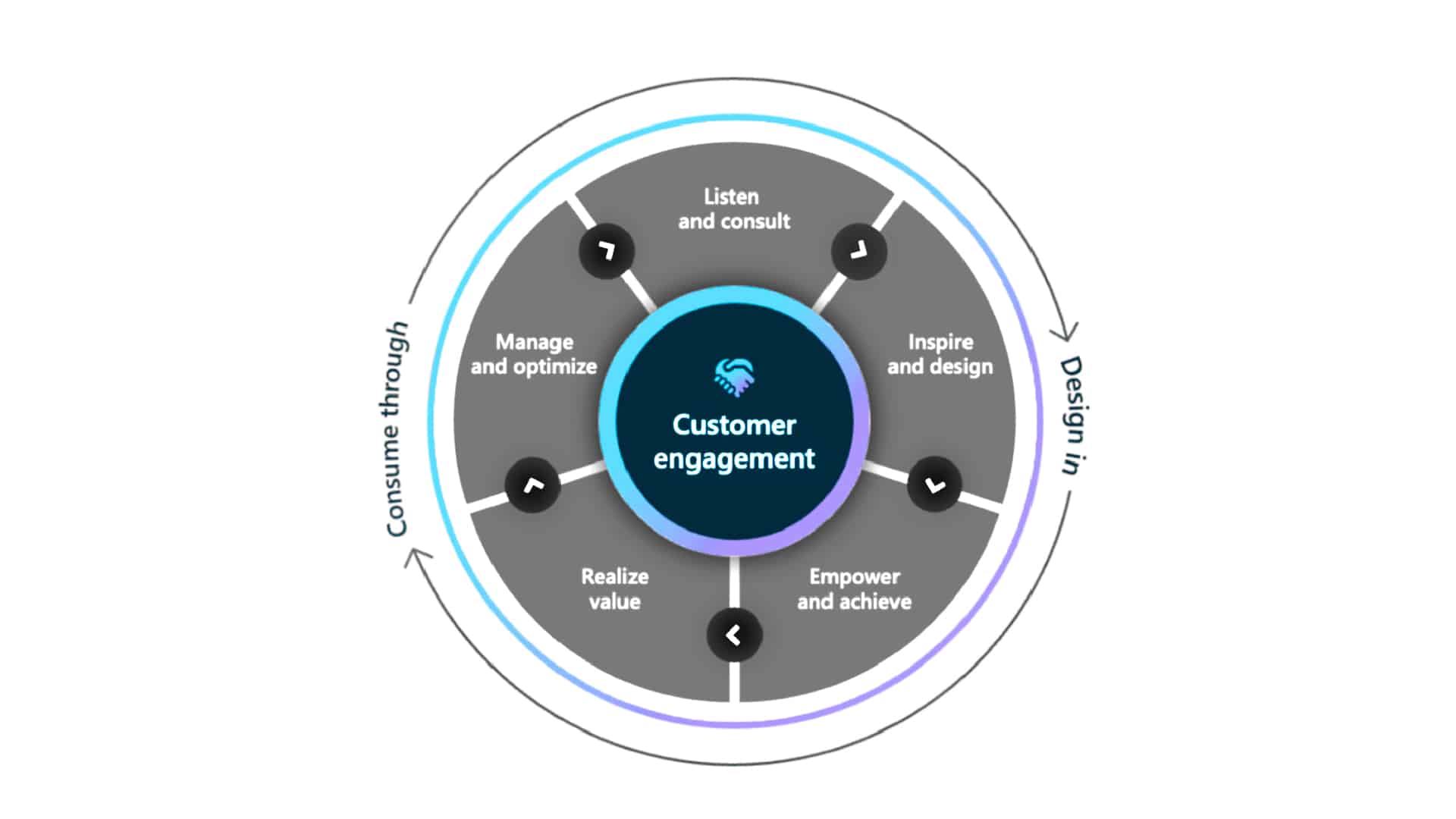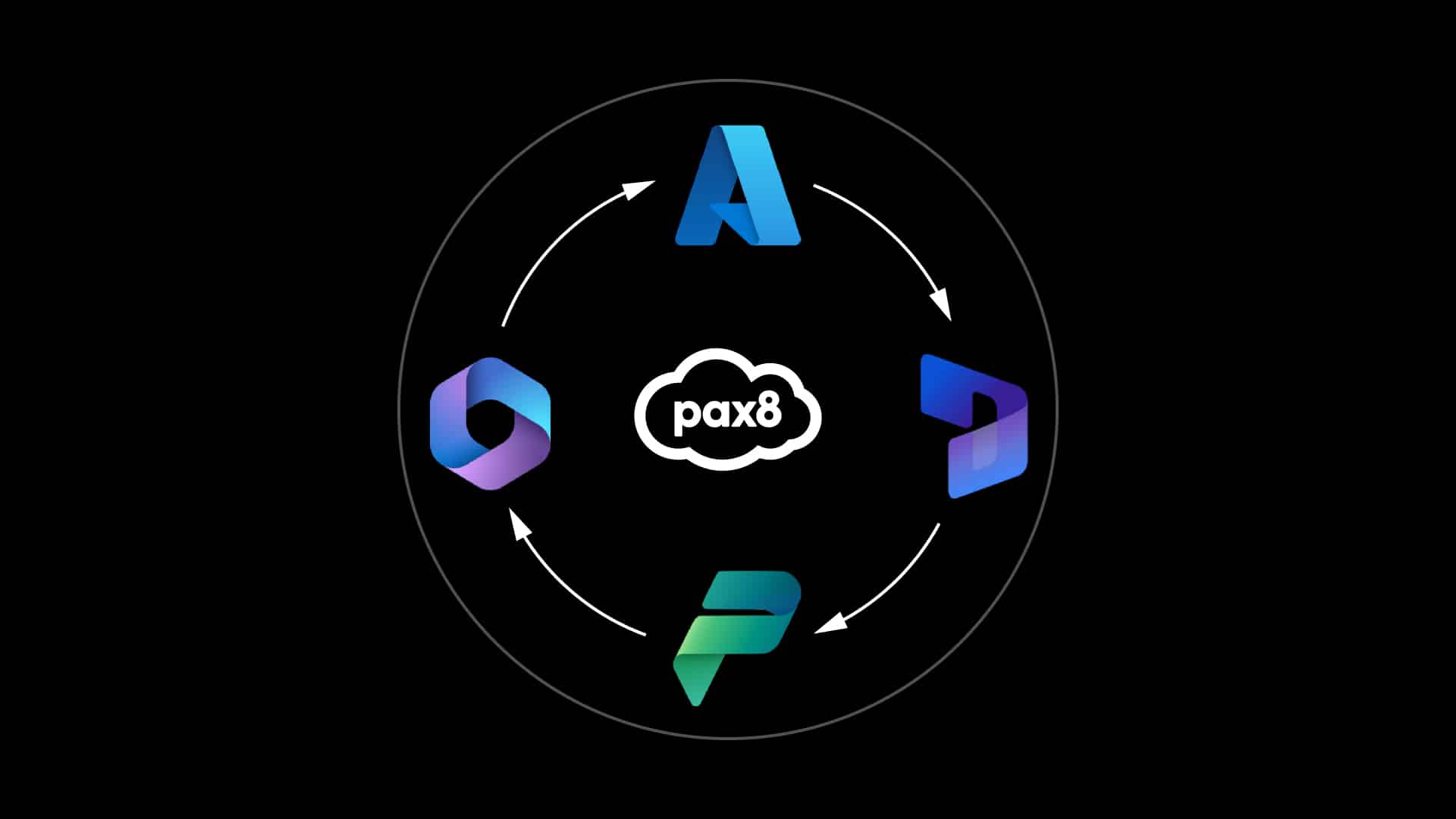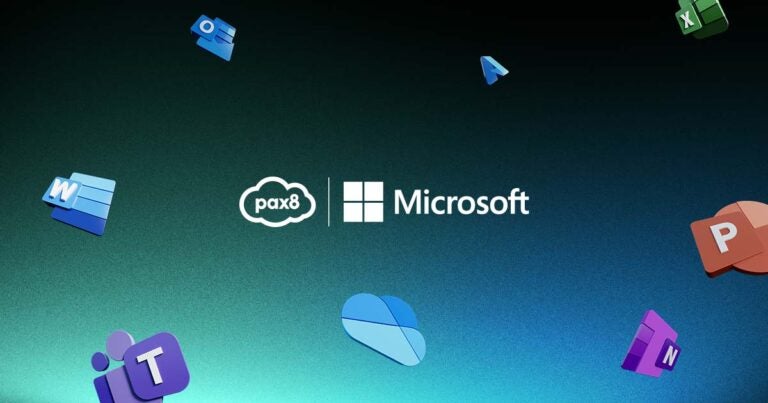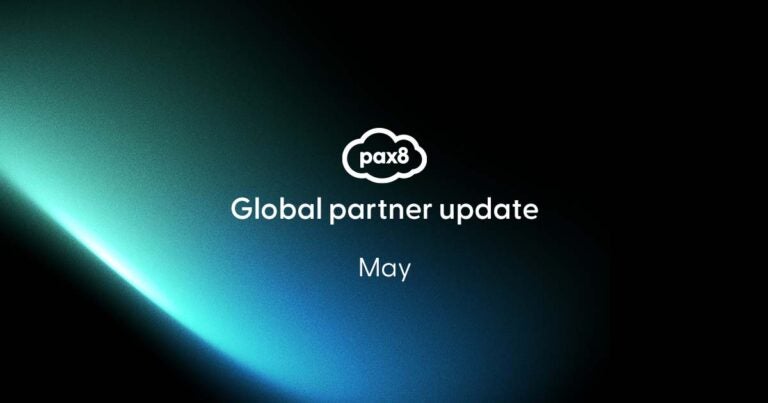Microsoft Dynamics 365 is a solution area that, for many managed service providers (MSPs), has been something to be avoided, ignored, even feared. This is why when Microsoft talked numbers at Microsoft Inspire 2023, we heard that although there are more than 400,000 partners selling Microsoft solutions (the majority of who transact Modern Work solutions), there are only 11,000 transacting Dynamics 365 actively — just fewer than 3%, which is about the same percentage of Microsoft 365 customers using Dynamics 365. Given the low market penetration of this powerful solution, there’s a huge opportunity for MSPs to introduce Dynamics to their clients and upsell their Microsoft offerings overall.
In this blog, I’ll cover why transacting Dynamics 365 is such a potent opportunity, why it’s never been a better time for partners to expand their offerings, and how Dynamics 365 can add more value to customers.
Don’t wait to differentiate
You’ve only got to look at the Microsoft Customer Engagement Methodology (MCEM) content to see why partners need to differentiate, which is all about becoming Trusted Advisors to your customers, their one-stop shop. First, listen to your customers and ask them the right questions. What business challenges are they currently facing? What solutions are they currently using, and are those solutions helping them be more productive? How are they utilizing their data? And do they have a full, 360-degree view of their operations? By focusing on their challenges and how their tech stack helps them solve those challenges, this will help you move from a tech-led to business-led conversation, in which your clients can see the direct benefits of your offerings. Moving from a tech-led to a business-led conversation can help you uncover opportunities not just for Business Applications but the client’s entire environment.
To understand the business holistically, you’ll want to speak to other stakeholders besides the IT manager. Ask what their current goals are (e.g., productivity, business growth). Once you’ve gotten this information, you can start to inspire them with the right technology. For instance, if their current business applications don’t integrate with Teams and Outlook or if they aren’t able harness internal and customer data to make informed decisions in real time, this is an opportunity to present solutions that enable this kind of business intelligence and agility. Asking open questions to different personas within the business is key to opening the discussion, understanding your customer, and discovering new opportunities.
How business-led discussion opens new Microsoft opportunities
This is about selling the right solutions at the right time to the right customer, and revealing to them how the right technology can help them achieve better business growth and more streamlined operations. Meanwhile, you’ll be able to add value, managing and optimizing their environments, leading to cross-sell and upsell opportunities, which, in turn, creates a virtuous circle of business successes. Take a look at the infographic below:

The myth that the Microsoft suite solution areas operate as separate clouds can now be put to rest. In fact, we should instead think of the Microsoft suite as one, singular cloud, functioning harmoniously. In the graphic below, you’ll see the typical assumptions made by partners when they build their Microsoft practice:

As you can see, this is a linear endeavor, starting with Modern Work, then Azure, followed by Business Apps. I’ve even heard partners say they “have to” build their Azure practice first before even thinking about Business Applications.
And this is simply not the case, especially at Pax8. As a true value-adding Marketplace, we enable partners to transact the entire suite of Microsoft solutions with the fastest routes to market, regardless of where they start.
Adding Dynamics 365 to your solution offerings provides so much more than tacking on a few licenses to your business and end customers. In fact, it solidifies the opportunity for your clients to upgrade their Microsoft 365 licenses to more premium offerings. And with the enhancements offered by Microsoft Copilot, your clients are going to want to make sure they’ve got the competitive edge when it comes to future-facing A.I. capabilities.
The power of Copilot and Azure with Dynamics 365
You may have heard about the groundbreaking possibilities of Copilot, how it can summarize long email threads in Outlook, automatically take notes on Teams calls, and create proposals and drafts in Word or PowerPoint just by being asked. But add Dynamics 365, and the story gets more impressive — and more valuable to your clients.
Imagine taking those summarized email threads and automatically saving them to a client record in your CRM with seamless integration. Or having notes from a call on Teams automatically typed up, then having them automatically saved to the client record in your CRM. You can even use those automatically typed-up notes to draft a follow-up email with just a few clicks. You can even leverage that data from your CRM to have a proposal built for you in Word or PowerPoint and saved to your CRM easily. It’s all possible with Copilot.
Now let’s add in the Azure effect. Because Dynamics 365 drives Azure, you can offer solutions in Azure such as Azure Logic Apps, Azure Functions, and Azure Data Lake to meet the needs for integrations and storage. Dynamics works with development and testing, using services like Azure DevOps, Azure App Service, and Azure Functions.
You can offer the powerful analytics and reporting services Azure provides with Azure Synapse Analytics, Azure Data Factory, Microsoft Power BI, and Fabric. Or even move into the world of A.I. and machine learning with Azure Cognitive Services, Azure Machine Learning, and Azure Bot Services. There are many ways that Dynamics 365 can help you boost Azure consumption, thereby adding value to customers, reducing their total cost of ownership, and increasing their spend with you as their trusted advisor. Pax8 facilitates this Dynamics 365 practice across the entire Microsoft suite, building your business, your customers’ businesses, and ensuring you’ve got customers for life.
How selling Dynamics 365 through Pax8 works

Your go-to-market process with Dynamics 365 and Pax8 can be broken down into five steps:
1. Activation
Pax8 can help you activate your Dynamics 365 sales from start to finish. Our professional Services and sales teams make it easier than ever with provisioning service and education.
To get started using tools such as Cloud Ascent, take our 30-minute Pax8 Academy Course, where you can learn more about how to use your data within Cloud Ascent to identify the high-propensity customers in your existing base for Dynamics 365, Azure, and Modern Work. Pax8 partners have identified $2.6 billion worth of annual recurring revenue opportunity in their databases, and more than half of that is Dynamics 365 opportunity.* You can also watch one of our Dynamics 365 Demystification sessions to help you fully understand the opportunity, how to take advantage of it, and how Pax8 will support you through the entire process.
2. Enablement
Once you’re activated, it’s time to get your sales team ready to take the message to your customer. This is all available via our training at Pax8 Academy. This one-hour course gives your sales team a comprehensive overview of Dynamics 365, the opportunity it presents, the ROI for the customers, how to spot and unlock opportunities, and the conversations to have with your customers.
Selling Dynamics 365 is easier than you may think. In fact, you can typically unlock a Dynamics 365 opportunity in your customer base without even mentioning the word “Dynamics.” It’s all about refining the conversations you’re already having with your customers and reaching the right people. On top of this, we also have a team of experts to support with ongoing enablement to help build confidence for your own sales team.
3. Go-to-market
Our support includes marketing collateral, conversation guides, customer call support, and customer webinar support, and whatever else you may need to go to market with Dynamics 365. With your Cloud Ascent target list, you can become the one-stop shop for your existing customer base as well as drive the right conversations with potential new customers and maximize every opportunity.
4. Winning business
Winning those first few customers is key, and Pax8 is here to support you from start to finish. Our Pax8 Professional Services team and Professional Services P2P Dynamics 365 Deployment Partners can help you with pitching, customer demos, scoping, delivery, and ongoing support. With this program, you are involved every step of the way; it’s your customer, your licensing, and your Microsoft recognition (think about those Solutions Partner Designations and the increased upsell and cross-sell with Modern Work and Azure). Pax8 acts as an extension of your team, ensuring your customers have a seamless experience, and providing you with more opportunities to do what you do best: grow your business.
5. Accelerate
Once you nail down those first few sales, selling Dynamics 365 will feel like business as usual. The idea of finding the right customers and selling the solutions that fit their needs becomes second nature. And the acceleration doesn’t stop with Dynamics 365. As the demand for Microsoft 365 and Azure increases, you’ll be able to reap those business benefits, resulting in an MSP that truly stands out from the rest.
How to get started
So, you’re ready to get started selling Microsoft Dynamics 365. What’s the first step? The simple answer would be to schedule a call with your account manager. You can also register for the next Dynamics Demystification session. Or you can check out the Dynamics 365 training in Pax8 Academy and act on your next big opportunity.
* According to Pax8 internal data, 2023.





